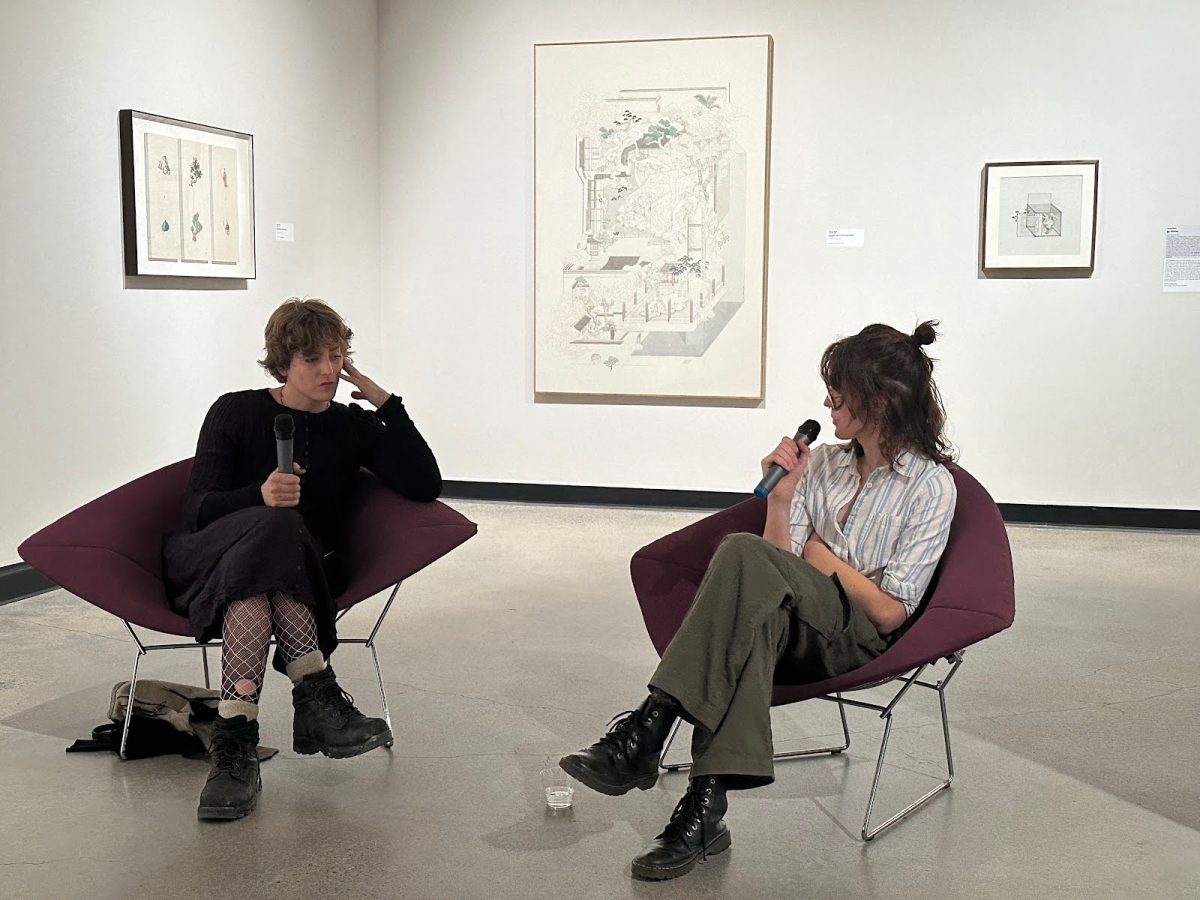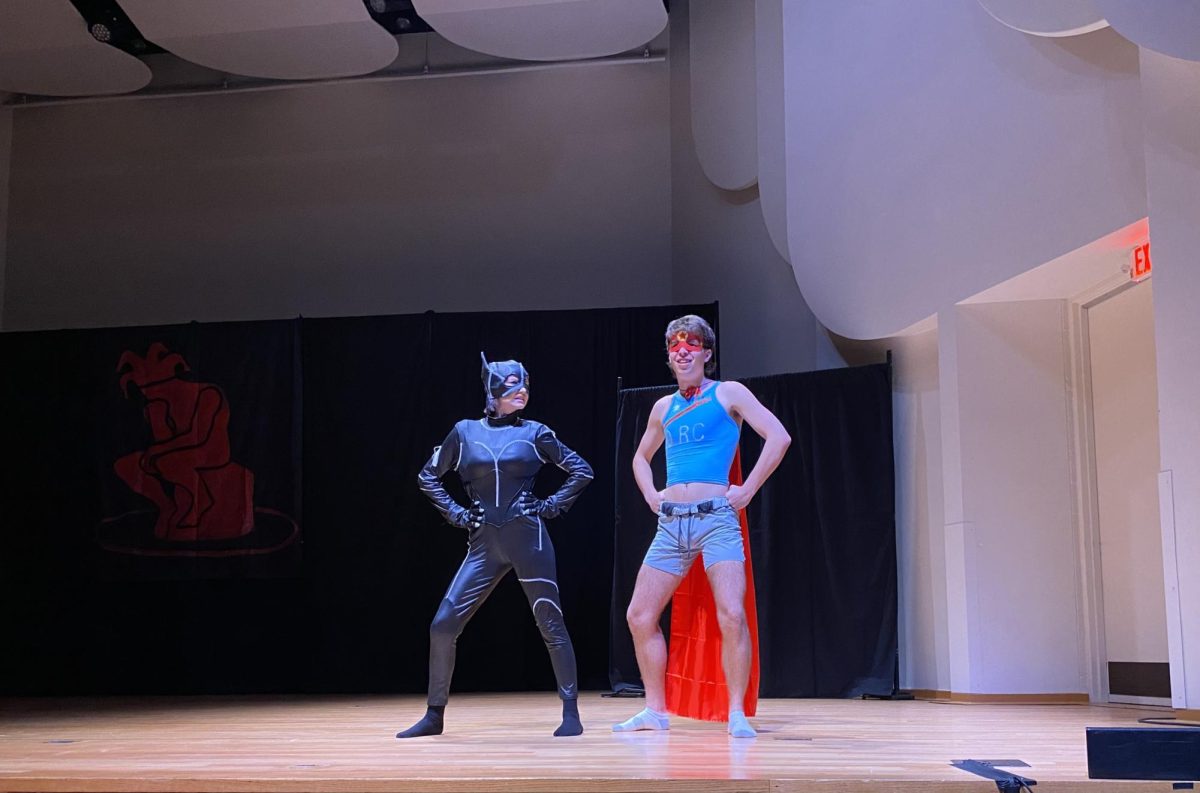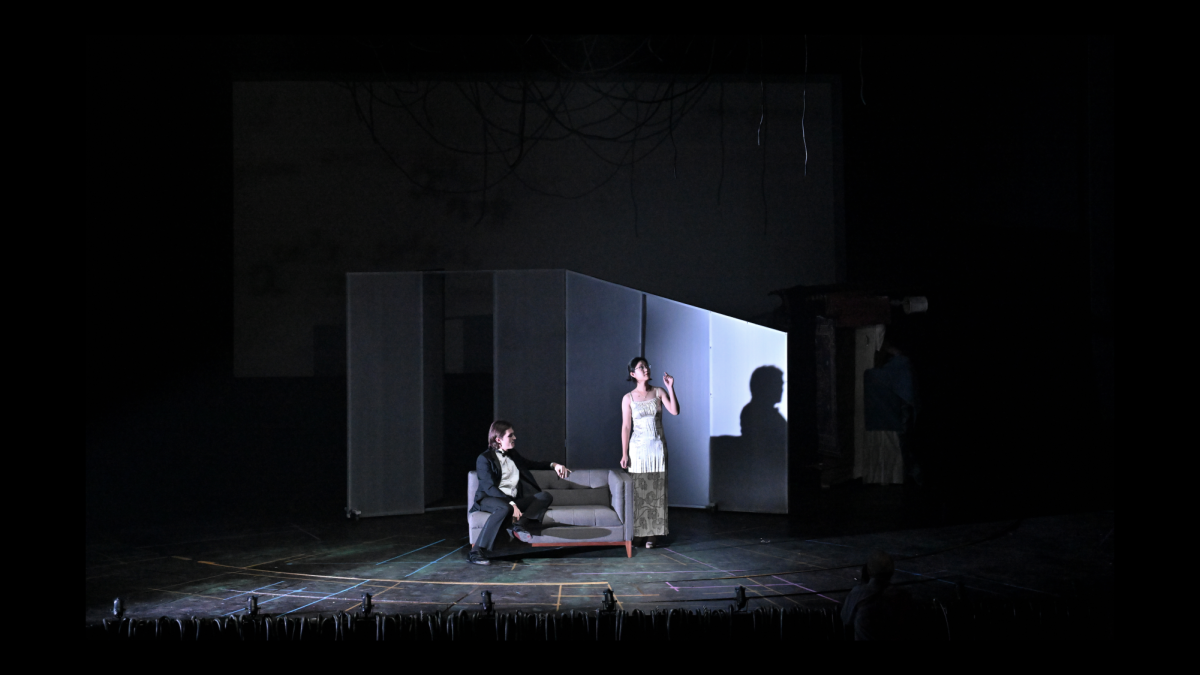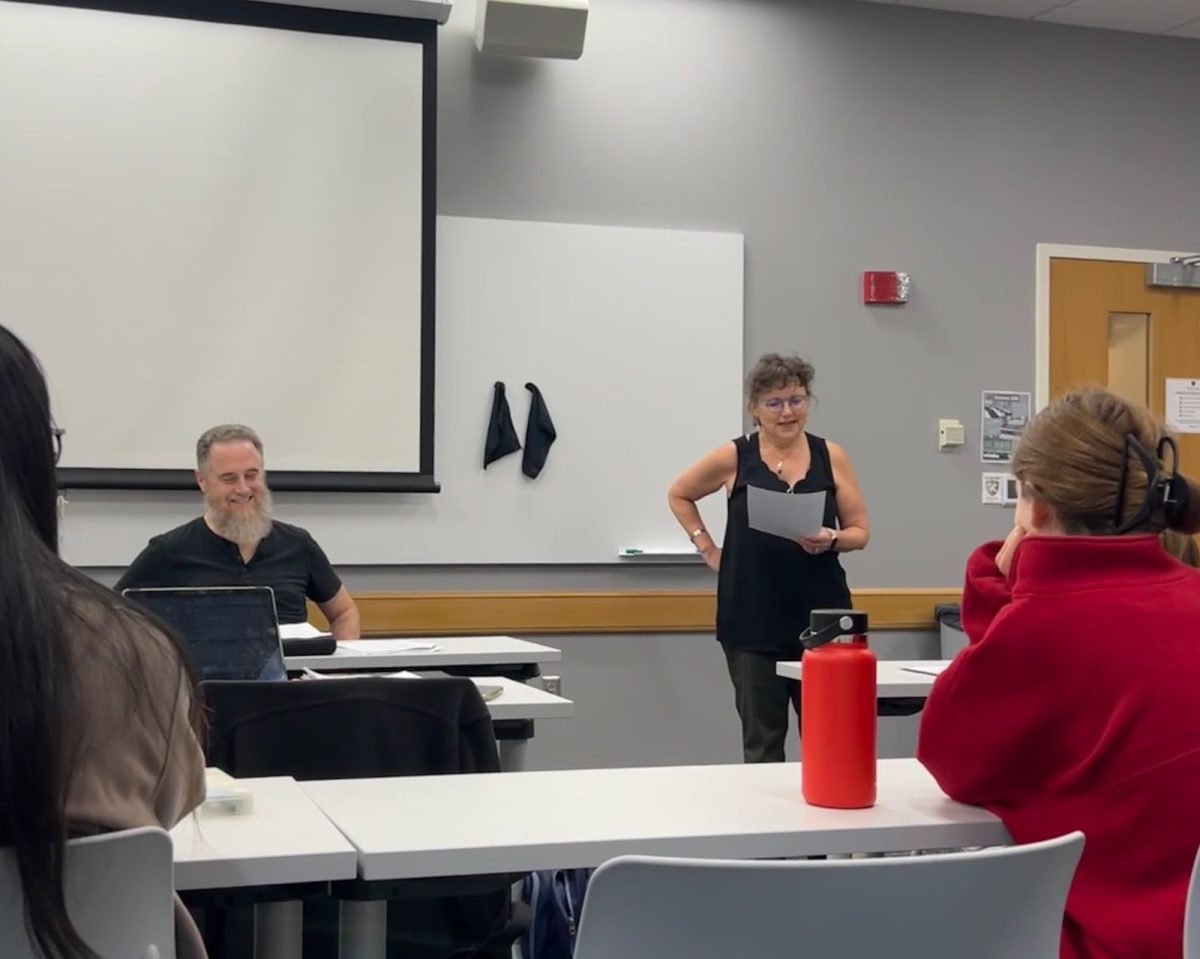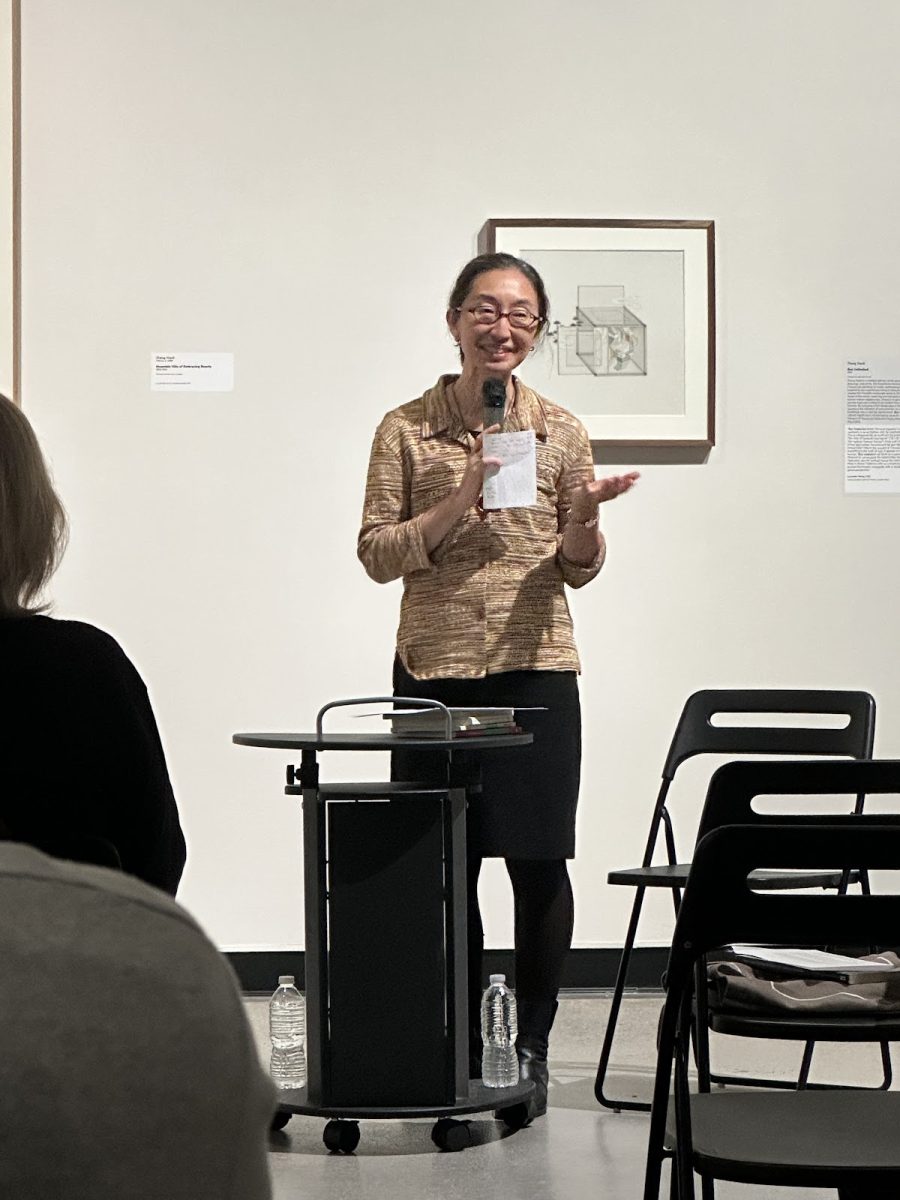Sitting in Hanes Art Gallery is a painting that will be different every time you go see it. The painting by Willa Wasserman, titled “Making the shape of the letter x or ‘no’ with my body reflected in this northwest facing mirror version 3,” includes a fourth dimension in its materials list: time. The oil painting on patinated bronze, stable enough to retain its general appearance for decades, will nevertheless change quite perceptibly as the oil, silver nitrate and bronze react.
Wasserman is a transgender artist from Indiana, who has been engaged in the practices of oil painting and metal-working since she was young. She now lives and works in New York City, and her artwork has been exhibited in France, England and Mexico.
On Nov. 13, senior Jane Alexander sat down with Wasserman to discuss the painting, Wasserman’s practice as an artist and the importance of trans art in general. The painting was brought to Wake Forest by Alexander, an intern at Hanes Art Gallery, who was one of the eight students to purchase contemporary artwork in the spring of 2024 for the Reese Collection. Speaking of the buying trip, Alexander said, “I was googling ‘trans art New York City’[…]. I was dead set on that, especially one that incorporated body.”
Alexander was also intentional about disrupting the existing ecosystem of trans art in the Reese Collection.
“I wanted something that was contrasted to the trans art we already had in the collection, which was glamorous, glossy, etc,” she said. One look at “Making the shape of the letter x or ‘no’” confirms that Alexander’s purchase was a massive success.
Sophomore Rocio Saucedo confirmed this, saying, “The painting itself gave me a very dark impression; it was really cool.”
The painting, along with the other works in Wasserman’s collection, are heavily indebted to Francisco Goya, particularly what is referred to as his “Black Paintings:” haunting, nightmarish canvases that Goya painted at the end of his life when he was contemplating his failing eyesight and mortality. In turn, Wasserman’s figure is intense, brooding, seemingly hell-bent on evoking a sense of disaster. In a review of the collection, art critic and essayist Kay Gabriel writes, “Her figures seem to have walked out of catastrophe.”
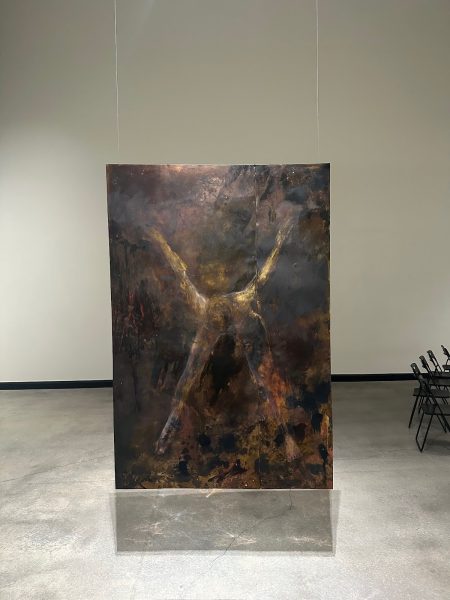
While heavily abstracted, Wasserman’s figure is nevertheless clearly defined and centralized. “A figure in pain stands in for something else, or she blocks our path,” Gabriel writes. “Standing in for something else is typical of trans figuration.”
For Wasserman, keeping the body lucid and in focus is not only a matter of aesthetic technique, but also necessary because the body is where the tension of her work resides. As she said in the discussion, “It’s helpful to define the stakes of my practice […]. I never want to lose the figure or the object in the painting.”
A significant portion of Alexander and Wasserman’s discussion was spent reflecting on how trans people are received by the general public. Wasserman believes that some people are afraid of transgender people because unlike most, they transgress boundaries and are able to occupy multiple subject positions.
“I thought it was really cool how she talked about using art to go across boundaries, and that [she] herself as a trans person was going across boundaries,” Saucedo said. With these transgressions, of course, comes a fear of the unknown — a fear which breeds resentment and anger.
This is something Alexander was thinking about as she was selecting and justifying this piece: “There were talks of, ‘Oh, this might alienate students, people might not get it,’ and I was thinking, that is kind of the point of acquiring something like this is that it challenges you […]. You’re forced to think about it.”
Alexander’s contribution to the Reese Collection is valuable in so many ways. She brings an exciting artist with a fresh perspective into the fold at Wake Forest. Hearing her speak about her practice was just as rewarding as staring at her work. Ultimately, I found Wasserman to be an artist with a deep reverence for the history of painting — and the materiality of the medium, itself — with a real belief in the magic that occurs at the moment paint collides with the surface: “It’s going to happen in a different way for each person.”


